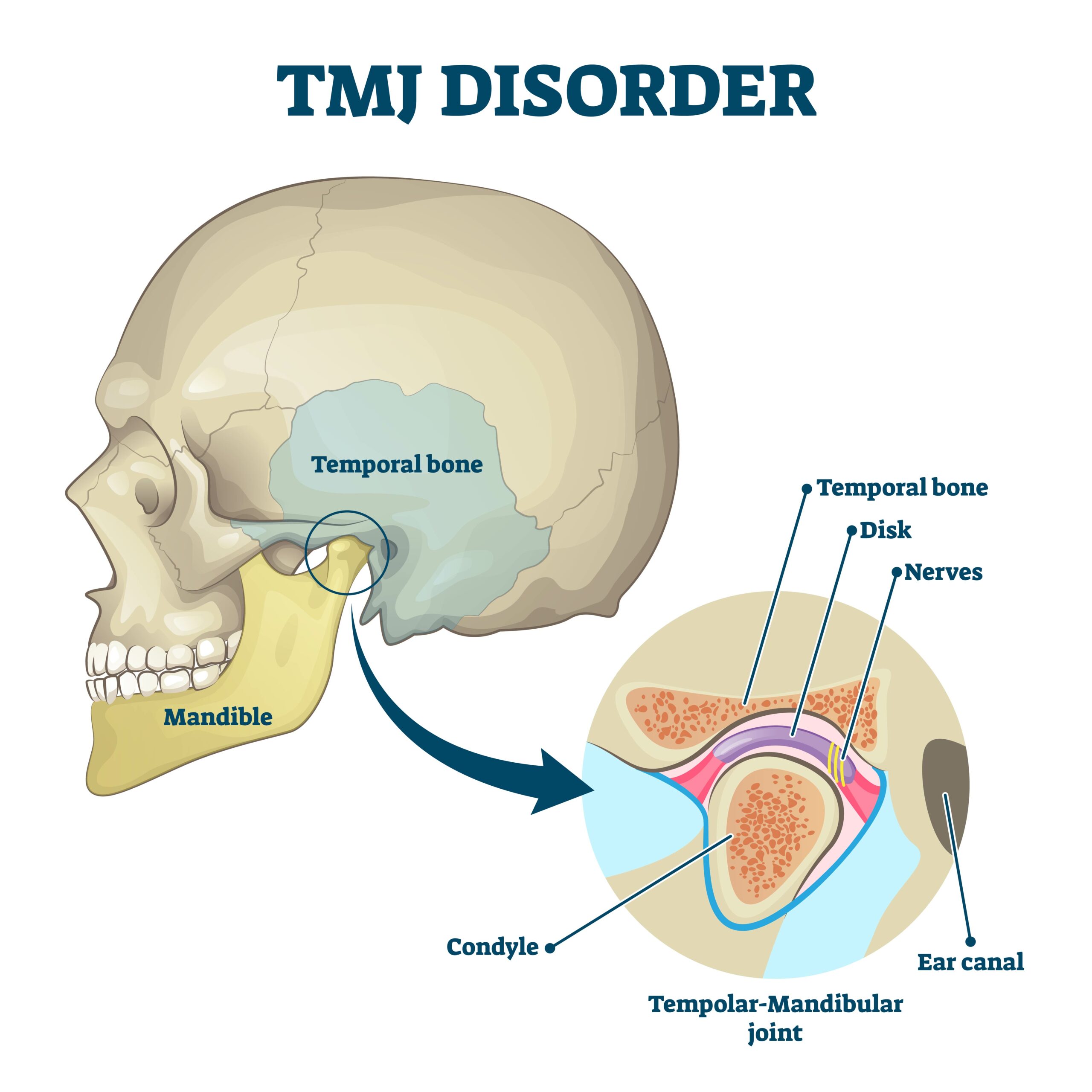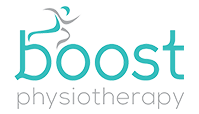
TMJ Dysfunction – What is it?
Did you know that many people suffer from temporomandibular joint dysfunction (TMD)? Oftentimes, it can be very debilitating since this dysfunction targets the jaw joint and/or the muscles surrounding the jaw. Some people may experience popping or clicking in the jaw, but if there is no pain or limitation of movement associated with those symptoms, then it is not considered TMD! So what does classify as TMD and how do we treat it? Between a few healthcare professionals, we’ll be sure to find a treatment that best suits your needs.
What is Temporomandibular Joint Dysfunction (TMD)?
Before we dive into the dysfunction, let’s explore what the temporomandibular joint consists of! The temporomandibular joint (TMJ) is a joint located on both sides of your face in front of your ears. This joint connects the lower jawbone to the skull and allows for many complex movements such as chewing, yawning, swallowing, speaking, and opening and closing the mouth. You can locate your TMJ simply by placing your hands slightly in front of your ears on either side of your face; by opening and closing your mouth, you should be able to feel it!
TMD, as the name suggests, refers to a dysfunction within the TMJ itself. There are 3 different classifications for TMD. People can have one classification or they can have a combination of them.
- 1. Joint disorders – this can include TMJ disc disorders (such as a displacement or malalignment of the disc) or degenerative joint disease within the joint
- 2. Disorders associated with the muscles, specifically masticatory muscles for chewing
- 3. Headaches or neck pain associated with TMD
TMD may be caused by many different factors. However, each person has a unique way of developing TMD and sometimes, it can be difficult to determine what is contributing to their pain and discomfort. A few common causes of TMD include, but are not limited to:
- Bruxism (teeth grinding/clenching): these habits change the way the teeth become aligned and therefore, can negatively affect the muscles used when chewing
- Dislocation of the TMJ disc
- Arthritis of the TMJ
- Excessive and repetitive stress to the jaw: for example, frequent gum chewing or nail biting will cause excessive and repetitive stress to the jaw, which may result in bruxism
- Acute trauma to the head, neck, or jaw
- Improper alignment of the jaw
What are the symptoms of TMD?
There are many symptoms of TMD and it can vary between different people! People between the ages of 20 to 40 commonly experience TMJ problems or TMD. Fun fact: women are also more likely to have this condition than men! Some symptoms may include:
- Jaw pain or tenderness: this pain may be super sharp and sudden when you swallow, yawn, talk, chew, etc., or it can be a constant and dull pain
- Pain on one or both sides of the TMJ
- Headaches and/or earaches
- Tinnitus (ringing in the ears)
- Pain in the neck and/or shoulders
- Difficulty opening the mouth widely
- Locked jaw (can be locked while open or closed)
- Clicking, popping, grating sounds when opening or closing the mouth
- Pain, tenderness, soreness, or achiness in the jaw/face muscles, or around the temples
- Clenching or grinding of teeth
- Swelling on one side of the face
It’s important to note that if you do experience any clicking or popping in the jaw, but you do not have any pain, discomfort, or limitation of movement associated with it, you do not need to seek any treatment for your TMJ. It is completely normal to have some clicks and pops here and there in the jaw, as long as it does not cause you pain!
How can TMD be treated?
Although this condition can become severe and debilitating, most cases of TMD are temporary and can be relieved by conservative treatments. The first step is to inform your healthcare professional– whether your dentist, physician, or physiotherapist – that you are experiencing jaw pain. Remember, the earlier it is diagnosed, the quicker it will be treated! Once your jaw has undergone a thorough assessment to examine opening/closing movements, as well as the areas of pain and discomfort, X-ray imaging may be considered. This is to determine the extent of damage within your jaw. After that, you can work with a physiotherapist to stretch and strengthen your jaw muscles, perform manual therapy to relieve pain and improve functionality of the jaw, and correct postures that may be contributing to your pain. Other types of treatment can include the use of therapeutic ultrasound, TENS machine, IMS/dry needling, massage, etc. Surgical treatment is considered as a last resort if all other options have been exhausted and severe pain is still present.
But what can you do in the meantime? Here are 5 things you can do to avoid any “flare ups” from happening:
- Apply a moist heat pack onto the side of your face
We want to relax the jaw/face muscles, so apply the heat pack for about 10 minutes.
- Eat soft foods!
This one may be hard but it’s best to avoid eating hard and crunchy foods (eg. pretzels, raw carrots, popcorn), as well as chewy foods (eg. taffy, caramel, gum)! This is to prevent the jaw muscles from overworking and causing you pain.
- Avoid moving your jaw to the extremes!
When yawning or chewing, try not to open your mouth too widely. In contrast, avoid resting your chin on your hand or holding the phone between your ear and shoulder.
- Avoid clenching or grinding your teeth
This one can be challenging because some people clench and grind their teeth while they sleep. Being consciously aware of your jaw behaviours during the day can serve as a reminder to relax your jaw. Alternatively, ask your dentist if a splint or night guard is an appropriate treatment option for you.
Stress can also be a contributing factor that can lead to clenching and grinding of the teeth! By acknowledging and avoiding activities that may stress you out, and perhaps adopting more relaxing activities, this can help to ease the tension accumulated in the jaw.
- Take over-the-counter pain medications (eg. Tylenol or Advil)
These pain medications can be used temporarily, but make sure you check with your physician, pharmacist, or dentist first to see if this option is well-suited for you.
At Boost Physiotherapy, our physiotherapists are ready to assist you with your injuries, even if they are jaw-related! If you experience any symptoms of TMJ/TMD, be sure to talk to your physiotherapist or dentist to determine what treatment option best suits your needs. If you have any further questions about TMJ/TMD, book an appointment online or call us today at 587-635-5555 (South Edmonton) or 780-591-5555 (Stony Plain). Our physiotherapists will be happy to assist you in any way!
BY: kneumann
Uncategorized
COMMENTS: No Comments
